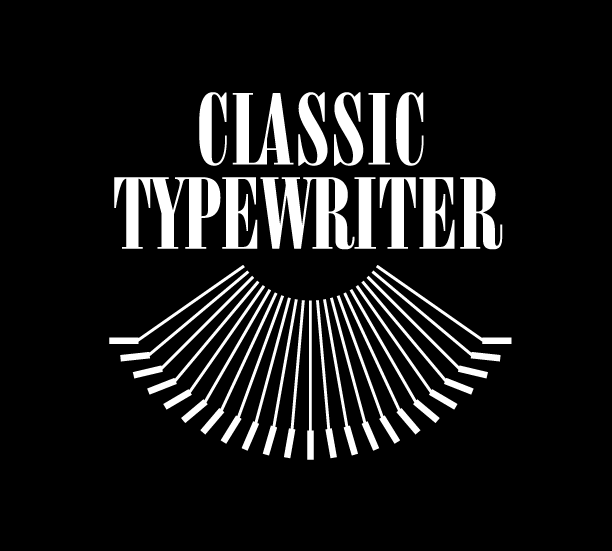The Sacred Machine: Spiritual Luminaries and Their Typewriters
(Leo Tolstoy and a typist).
The clack of keys, the strike of a letter on a page—there's something deeply meditative about writing on a typewriter. Unlike digital devices, the typewriter demands presence. It invites a kind of listening, a rhythm, a ritual. And while we often associate typewriters with journalists, novelists, or bureaucrats, they were also used by some of the most profound spiritual thinkers of the modern age.
From Rudolf Steiner to Mahatma Gandhi, from Leo Tolstoy to lesser-known mystics, the typewriter became a sacred instrument—one that helped channel visions, philosophies, and calls for awakening into tangible form.
Rudolf Steiner: Esoteric Science on the Page
Although Rudolf Steiner (1861–1925), founder of Anthroposophy, primarily dictated his lectures and wrote by hand, the typewriter played a quiet but essential role in preserving and distributing his ideas.
Typewriters in the Anthroposophical Movement:
Steiner’s stenographers and students used early typewriters—notably Remingtons and Blickensderfers—to transcribe and disseminate hundreds of lectures.
These machines became vessels of esoteric transmission, capturing teachings on karma, reincarnation, biodynamic farming, education, and the spiritual world.
Typewritten manuscripts were often passed hand to hand, photocopied, and translated by spiritual seekers around the world.
In a way, the typewriter became the mechanical counterpart to the clairvoyant voice—a bridge between higher realms and the printed word.
Mahatma Gandhi: Silence, Simplicity, and the Tap of Keys
Gandhi (1869–1948), known for his ascetic lifestyle, is not someone we might picture using a typewriter. Yet he recognized the tool's usefulness in spreading his spiritual-political message efficiently.
Gandhi’s Use of the Typewriter:
Gandhi often had secretaries and close aides type his dictations. His profound reflections on ahimsa (nonviolence), truth (satya), and self-rule (swaraj) were often delivered in typewritten form.
During his time in South Africa, Gandhi’s legal correspondence and political tracts were typed using a basic manual typewriter.
In later years, the typewriter helped propagate Harijan, his weekly journal of spiritual and political commentary.
For Gandhi, the typewriter was not a luxury—it was a tool of service, aiding in the mass communication of timeless truths.
Leo Tolstoy: A Prophet at the End of Empire
Though Leo Tolstoy (1828–1910) is best known for his epic novels, his later years saw a profound spiritual transformation. He renounced wealth, embraced pacifism, and became a moral beacon for figures like Gandhi and Martin Luther King Jr.
Tolstoy and the Typewriter:
By the late 1800s, Tolstoy’s disciples began using typewriters—especially Remington and Yost models—to record and disseminate his later spiritual writings.
Texts like The Kingdom of God is Within You and A Letter to a Hindu were typed and smuggled internationally, influencing nonviolent resistance movements.
The typewriter was crucial in spreading Tolstoy’s Christian anarchist and pacifist ideals, even as the Russian Orthodox Church excommunicated him.
In this sense, Tolstoy’s ideas—radical and anti-establishment—rode the carriage of a typewriter into the 20th-century mind.
Jiddu Krishnamurti: Stillness, Attention, and the Typed Word
J. Krishnamurti (1895–1986), the Indian-born philosopher who rejected gurus and dogma, frequently used a typewriter in his later years.
Krishnamurti would type some of his talks and diaries himself, preferring the quiet, deliberate process over dictation.
His writing process mirrored his teachings: attentiveness, present-moment awareness, and inner silence.
Original typewritten manuscripts of his Notebook and Krishnamurti’s Journal reveal a mind attempting to transcribe insight as it arose—not polished, but alive.
His use of the typewriter was almost meditative, a slowing-down that matched the inner stillness he invited in others.
Thomas Merton: The Monk with a Royal
Thomas Merton (1915–1968), the Trappist monk, poet, and interfaith pioneer, famously typed many of his spiritual essays and letters on a Royal Quiet De Luxe.
Merton lived in near-total seclusion, yet his typewriter allowed him to reach the world—writing on peace, civil rights, Zen Buddhism, and contemplative practice.
His cave-like hermitage at Gethsemani monastery had no electricity, but his typewriter—powered by his own energy—became his voice to the outside world.
Letters typed by Merton reached the Dalai Lama, Thich Nhat Hanh, and other spiritual leaders.
The sound of Merton typing in silence was, in itself, a contemplative act.
Other Notables: Quiet Keys, Loud Teachings
Martin Buber, the Jewish mystic and philosopher, used a Continental typewriter for his writings on dialogue and presence.
Alan Watts, a popularizer of Zen in the West, drafted talks and books like The Wisdom of Insecurity on his portable Smith-Corona.
Helen Schucman, who scribed A Course in Miracles, typed up her inner dictations word for word—creating a modern spiritual classic.
The Typewriter as a Spiritual Instrument
It’s no accident that so many spiritual teachers and mystics were drawn to typewriters, even after the advent of digital word processing.
The typewriter offers:
Focus: No pop-ups, no email pings.
Embodiment: The hands strike; the words land physically.
Intentionality: Every sentence counts. There’s no backspace for erasing truth.
Ritual: The turning of the platen, the changing of ribbon—simple, mindful acts.
To type is to commit word to matter, soul to symbol.
Final Thoughts: Keys to the Kingdom Within
Whether in an ashram, a monastery, or a cramped study under candlelight, the typewriter has served as an instrument of revelation for many of the 20th century’s spiritual giants.
They didn’t type for productivity. They typed for clarity. They typed to listen.
And maybe that’s the invitation: not just to write, but to return to the sacred rhythm of thought, breath, and key.

